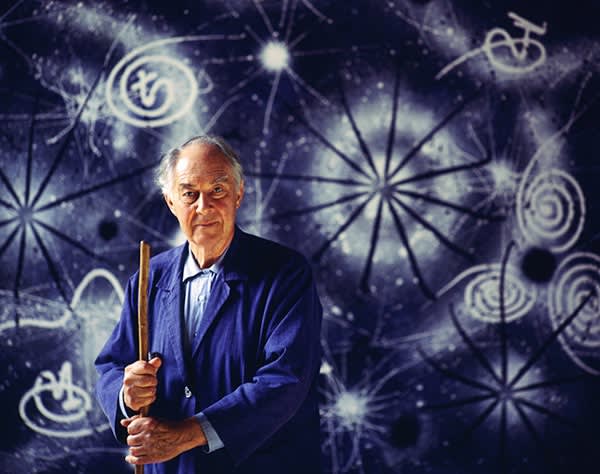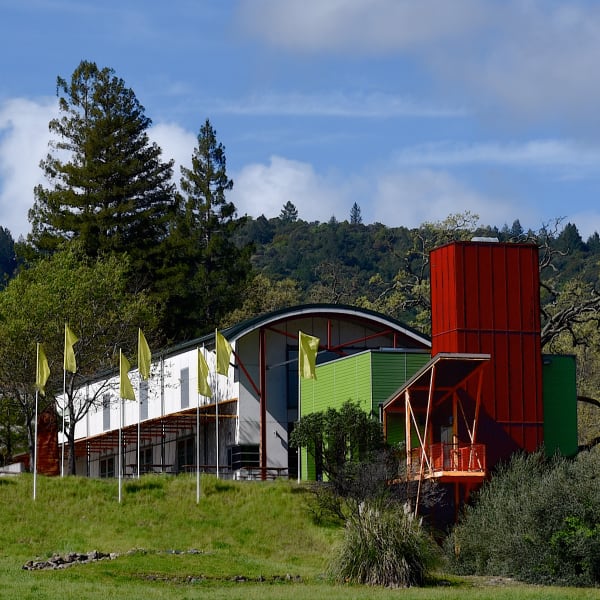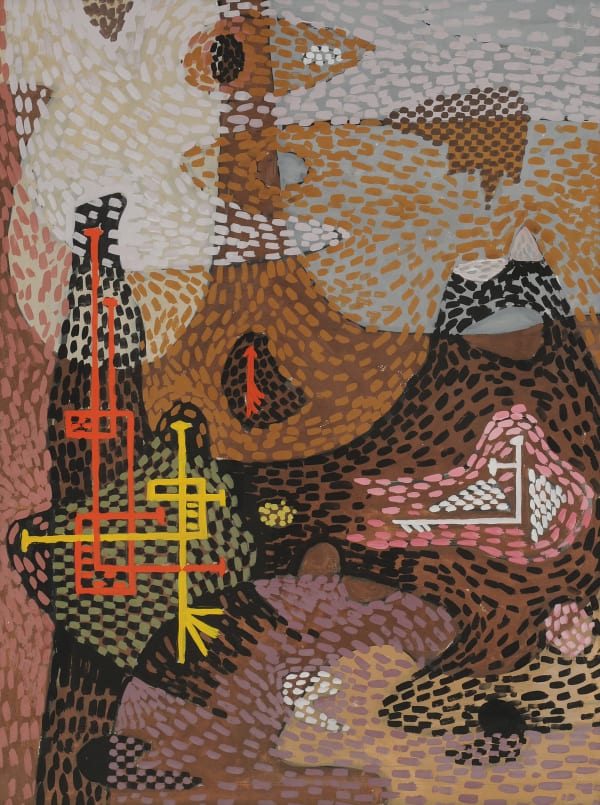The mind is open to be discovered and will offer clues about its nature to those who seek.
—Gordon Onslow Ford
Onslow Ford was training as an officer for the British Royal Navy when his lifelong love of art making proved too strong, and he moved to Paris to pursue his desire to paint. He met André Breton, who saw in his work and that of his best friend Robert Matta, the Surrealist search for an understanding of subconscious using automatic means.
During World War II, Onslow Ford was asked to come to NewYork to deliver a series of lectures on the Surrealist movement. These talks, which took place at the New School for Social Research in 1941, had a profound impact on a whole generation of young New York artists, including Jackson Pollock, Gerome Kamrowski, Jimmy Ernst, Robert Motherwell, and others.
Onslow Ford traveled with his new wife, Jacqueline Johnson, to Mexico, where they lived from 1941 till 1947 among the Tarascan Indians in an area west of Mexico City. The Indian's prioritization of nature, both in form and spirit, matched Onslow Ford's own, and this time saw an expansion of his spontaneous Surrealist gestures into more studied, measured map-like compositions depicting both natural and timeless geographies, as if seen from a bird's eye view. This mapping eventually resolved itself into simple geometries, and upon his move to the San Francisco Bay Area in 1947 would trigger his awareness of the primacy of the line, circle, and dot as the root forms of the universe. These works were shown soon upon his arrival in a solo show at the San Francisco Museum of Art in 1949 and the Dynaton exhibition, with Wolfgang Paalen and Lee Mullican, at the same museum in 1951.
The Bay Area (first San Francisco, then Sausalito and Mill Valley, and finally Inverness, near Point Reyes) proved to be the fertile environment that Onslow Ford needed to nurture his ongoing search for the inner worlds through the painting medium. Influenced by the gentle climate, the proximity to the sea, the influence of Asian art and calligraphy, and the spirited philosophical awareness that permeated the Bay Area and the people who were drawn to it, Onslow Ford found a perfect milieu in which to combine the rigor of his European training, the spontaneity of the Surrealists, and the lessons of nature. The result is five final decades of painting in which his evolution leaves the earthly and goes into the cosmic, never to return. The outer becomes inner, as the constellations of self-manifest in the shared consciousness, stopping briefly to mark the canvases of Gordon Onslow Ford.
-

Rendevous of Dreams at Hamburger Kunsthalle
June 13, 2025 - October 12, 2025One hundred years ago, the most renowned artistic movement of the twentieth century emerged in Paris: Surrealism. Sparked by a reconsideration of value systems in...Read more -

An Expansive New Surrealism Show Celebrates 100 Years Of Artistic Revolution
Artnet Oct 4, 2024Featuring more than 500 objects, the Centre Pompidou's 'Surrealism' show explores the global reach and diversity of the artistic movement. Between the rise of artificial...Read more -

Dimensionism: Modern Art in the Age of Einstein at the Zimmerli Art Museum at Rutgers University
Sep 3, 2019Dimensionism: Modern Art in the Age of Einstein is a groundbreaking exhibition that explores how modern art was influenced by advances in science, from Einstein’s...Read more -

Dimensionism: Modern Art in the Age of Einstein at BAMPFA
Nov 7, 2018In the early twentieth century, inspired by modern science such as Albert Einstein’s theory of relativity, an emerging avant-garde movement sought to expand the “dimensionality”...Read more
-

Weinstein Gallery and City Lights Bookstore present Gordon Onslow Ford: A Surrealist Exploring the Inner Worlds
Weinstein Gallery Nov 17, 2019A lecture and book signing with Fariba Bogzaran to celebrate the release of the new book: Gordon Onslow Ford: A Man on a Green Island...Read more -

Out of the Box: Tour and Tasting at Napa Valley Museum
Napa Valley Museum Sep 28, 2019You are cordially invited to join us at the Napa Valley Museum for two exciting exhibitions THE SURREALIST REVOLUTION IN AMERICA featuring Enrico Donati, Jimmy...Read more
















